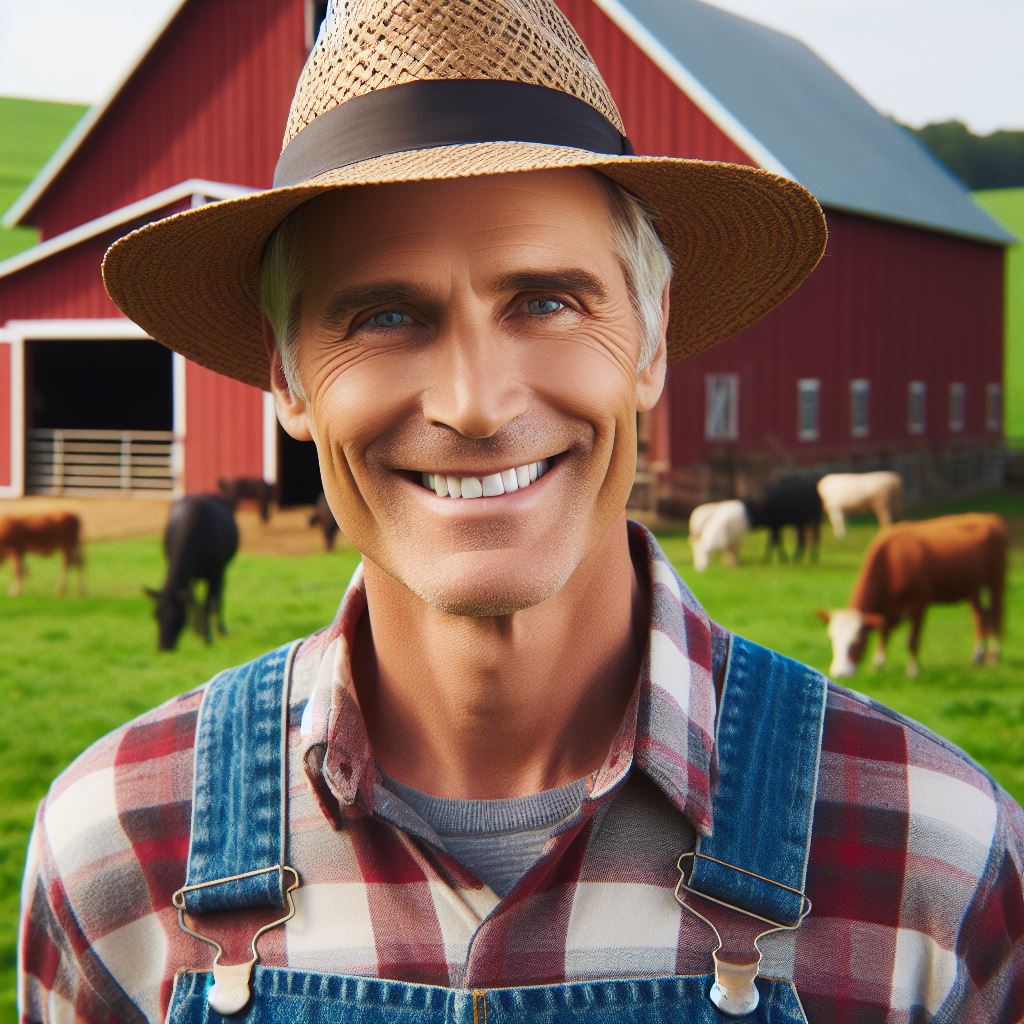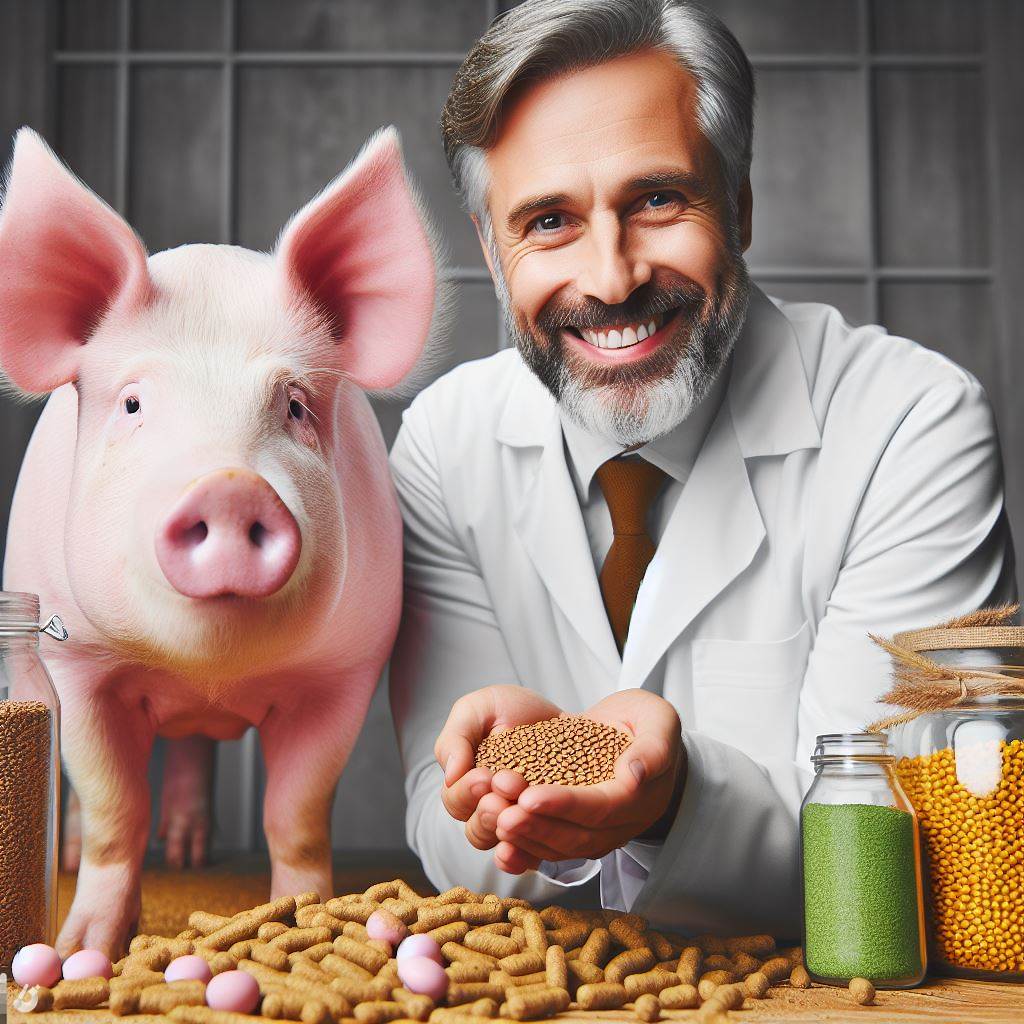Introduction
Explore the intricate world of livestock management, where diverse animal care practices converge.
This introduction delves into the multifaceted aspects of ensuring the health, productivity, and welfare of varied livestock species.
Overview of the importance of livestock management
Livestock management plays a crucial role in ensuring the well-being and productivity of animals.
Livestock management is crucial for sustainable agriculture, ensuring the health and well-being of animals.
Proper management practices optimize productivity, enhance food security, and contribute to ecological balance.
Effective livestock management also supports livelihoods, fostering economic resilience in agricultural communities worldwide.
Effective livestock management necessitates the implementation of diverse animal care techniques.
The role of nutrition in livestock management
A well-balanced diet plays a crucial role in maintaining optimal animal health and achieving success in livestock management.
Livestock owners must pay careful attention to the type of feed they provide, taking into consideration the dietary needs of different animal species and their specific age groups.
By understanding the importance of nutrition and choosing appropriate feed, farmers can ensure the overall well-being of their livestock.
Importance of a well-balanced diet for optimal animal health
Adequate nutrition is essential for livestock as it directly impacts their growth, reproduction, and overall productivity.
A well-balanced diet provides the necessary energy, proteins, minerals, and vitamins required for animals to thrive.
It helps in promoting good immune function, preventing diseases, and reducing the risk of malnutrition or deficiencies.
Moreover, a balanced diet contributes to better feed conversion, resulting in improved weight gain, milk production, and meat quality.
Different types of feed and their benefits
There are various types of feed available for livestock, each offering specific benefits and nutritional value.
Transform Your Agribusiness
Unlock your farm's potential with expert advice tailored to your needs. Get actionable steps that drive real results.
Get StartedFarmers must choose their feed based on the needs of their animals.
Some common types of feed include:
- Grass and Forage: This feed is rich in fiber and provides essential nutrients for ruminants like cattle and sheep. It aids in proper digestion and promotes rumen health.
- Concentrates: These feeds are rich in energy and are ideal for animals with high energy demands, such as horses and working animals. Concentrates usually include grains, oilseeds, and by-products from the food industry.
- Supplements: Often provided alongside other feeds, supplements help meet specific nutritional needs. They can include minerals, vitamins, probiotics, or additives that support overall health and performance.
By providing a combination of these feed types, farmers can ensure a well-rounded diet that meets the specific requirements of their livestock.
Considerations for dietary needs based on animal species and age
Animals have varying dietary needs based on their species and age, and proper consideration must be given to ensure their nutritional requirements are met:
- Ruminants: Animals like cattle and sheep have a unique digestive system that allows them to digest fibrous plant material. Farmers must provide sufficient forage to maintain their rumen health.
- Poultry: Chickens and turkeys require a diet rich in proteins for optimal growth and egg production. A balanced diet must contain grains, oilseeds, and essential amino acids.
- Swine: Pigs have a high energy demand and require diets rich in carbohydrates and fats. Fiber should be limited, and protein sources like soybean meal are essential for their growth.
- Horses: These animals require a diet consisting mostly of forage, along with limited concentrates. It is important to consider their age, activity level, and overall health status when determining their feed.
Furthermore, the dietary needs of animals may vary at different stages of life, such as during growth, reproduction, or lactation.
Pregnant or lactating animals often require additional nutrients to support the development of their offspring.
It is crucial for livestock owners to consult with veterinarians or nutritionists to develop specific feeding programs tailored to the needs of their animals.
In essence, nutrition plays a fundamental role in livestock management.
A well-balanced diet supports optimal animal health, enhances productivity, and reduces the risk of diseases and deficiencies.
By understanding the various types of feed and considering the specific dietary needs of different animal species and age groups, farmers can ensure the overall well-being and success of their livestock.
Health and hygiene practices for livestock
Regular vaccinations and preventive measures
- Ensure that all livestock animals receive regular vaccinations to prevent the spread of diseases.
- Consult with a veterinarian to determine the appropriate vaccination schedule for each type of livestock.
- Implement preventive measures such as quarantine for new animals to avoid introducing diseases to the herd.
- Keep records of all vaccinations to track the health history of each animal.
- Educate livestock owners and caretakers about the importance of vaccinations for overall herd health.
Proper sanitation and hygiene in housing and feeding areas
- Regularly clean and disinfect animal housing and feeding areas to minimize the risk of infections.
- Remove manure and soiled bedding, and replace with clean materials to maintain a clean environment.
- Provide adequate ventilation to reduce moisture and prevent the growth of bacteria and fungi.
- Implement biosecurity measures to prevent the entry and spread of pathogens in the livestock facility
- Train staff and caretakers on proper sanitation and hygiene practices to ensure consistency.
Importance of parasite control and deworming treatments
- Develop a parasite control program in consultation with a veterinarian to prevent infestations.
- Implement regular deworming treatments for livestock animals to control internal parasites.
- Monitor animals closely for signs of parasite infestations such as weight loss, diarrhea, and poor coat condition.
- Use proper dosage and administration methods for deworming medications to ensure effectiveness.
- Rotate deworming products regularly to prevent the development of drug-resistant parasites.
Furthermore, By implementing these health and hygiene practices for livestock, owners can ensure the overall well-being of their animals and reduce the risk of diseases and infestations.
Regular vaccinations and preventive measures, proper sanitation and hygiene in housing and feeding areas, as well as parasite control and deworming treatments, play crucial roles in maintaining a healthy and productive livestock herd.
Read: Winter Care for Livestock: A Complete Guide
Shelter and environmental considerations
Understanding the Specific Requirements for Different Animals
When it comes to livestock management, it is crucial to have a deep understanding of the specific needs and requirements of different animals.
Each species has unique preferences for shelter and environmental conditions that must be met to ensure their well-being and productivity.
For example, dairy cows prefer cool and well-ventilated environments, while pigs need access to shaded areas and wallow in mud on hot days.
Poultry, on the other hand, require secure housing with proper ventilation and lighting to thrive.
By understanding these specific requirements, farmers can provide optimal living conditions for their animals.
Proper Housing Design for Safety, Comfort, and Protection from Extreme Weather Conditions
The design of livestock housing plays a crucial role in providing safety, comfort, and protection from extreme weather conditions.
Well-designed shelters can prevent injuries, disease transmission, and discomfort for the animals.
Housing should be durable, with smooth surfaces and rounded edges to avoid injuries.
It is also important to provide adequate space for each animal to move and lay down comfortably.
Additionally, shelters should be built with appropriate insulation to protect animals from extreme cold or heat.
The Role of Ventilation, Lighting, and Space in Promoting Animal Well-being
Proper ventilation is essential in livestock housing to ensure good air quality and prevent respiratory issues.
Showcase Your Farming Business
Publish your professional farming services profile on our blog for a one-time fee of $200 and reach a dedicated audience of farmers and agribusiness owners.
Publish Your ProfileWell-ventilated barns help to remove excess moisture, ammonia, and contaminants, ensuring a healthy environment for the animals.
Lighting is another critical element in promoting animal well-being.
Natural light should be maximized, as it positively affects the animals’ mood, behavior, and production.
Artificial lighting can also be used strategically to manipulate the animals’ reproductive cycles or enhance growth.
Furthermore, providing adequate space for animals to move freely is crucial for their physical and mental well-being.
Overcrowding can lead to stress, aggression, and increased disease transmission.
Farmers must ensure that there is enough space for each animal to exhibit natural behaviors and prevent social conflicts.
In review, shelter and environmental considerations are vital aspects of livestock management.
Understanding the specific requirements for different animals, implementing proper housing design, and considering ventilation, lighting, and space can greatly contribute to animal well-being and productivity.
By providing optimal living conditions, farmers can ensure the health and welfare of their livestock, ultimately benefiting both the animals and the overall profitability of their farming operations.
Read: Breeding Livestock: Basics for Farm Success
Behavioral and psychological aspects of animal care
Stimulating and enriching environments to prevent boredom and stress
- Creating a diversified environment with various objects and activities
- Providing toys and puzzles to stimulate animals intellectually
- Offering opportunities for foraging and natural behaviors
- Ensuring that the animals have enough space to move and exercise
- Rotating and changing the environment regularly to avoid monotony
Providing social interactions and companionship for herd animals
- Grouping animals together, mimicking their natural social structures
- Allowing interaction and playtime among individuals in the herd
- Ensuring that animals have access to other herd members
- Considering the social needs and preferences of different species
- Monitoring and managing any conflicts or aggression within the group
Recognizing signs of distress and implementing measures to address them
- Observing animals for abnormal behaviors, such as aggression or withdrawal
- Providing a comfortable and safe shelter for animals to retreat to
- Ensuring access to clean water, optimal nutrition, and veterinary care
- Implementing stress-reducing techniques, such as calming music or aromatherapy
- Training animals for cooperative handling to minimize stress during procedures
Majorly, Behavioral and psychological aspects of animal care are crucial for promoting their overall well-being.
Animals thrive in stimulating and enriched environments that prevent boredom and stress.
By creating a diversified environment with various objects and activities, animals are engaged both physically and mentally.
Social interactions and companionship are particularly important for herd animals.
Grouping animals together and allowing them to interact and play mimics their natural social structures.
It is important to ensure that animals have access to other herd members to meet their social needs.
Recognizing signs of distress is key in providing adequate care.
Abnormal behaviors such as aggression or withdrawal should be monitored.
Animals should have access to a shelter, clean water, proper nutrition, and veterinary care.
Additionally, stress-reducing techniques like calming music or aromatherapy can be implemented.
Training animals for cooperative handling also reduces stress during procedures.
It is essential for livestock managers and caretakers to prioritize the behavioral and psychological well-being of the animals they care for.
By creating stimulating environments, providing social interactions, and addressing distress, we can ensure that the animals under our care lead healthy and fulfilling lives.
Read: Preventive Health Care for Cattle
Importance of Routine Health Checks and Veterinary Care
Regular monitoring and examination of animals to detect potential health issues
Livestock management involves the responsibility of ensuring the well-being and health of animals.
Regular health checks and examinations play a vital role in this process.
Monitoring the animals on a routine basis allows the early detection of any potential health problems.
It enables farmers and caretakers to take immediate action before the conditions worsen.
By observing the animals closely, signs of illness or distress can be quickly identified.
This includes changes in behavior, appetite, or physical appearance.
Early detection helps prevent the spread of diseases and aids in maintaining overall herd health.
During health checks, various parameters such as body temperature, heart rate, and respiratory rate are measured.
Any abnormalities or deviations from the normal range can indicate underlying health issues.
Additionally, regular physical examinations can help identify external injuries, wounds, or infections.
These can be promptly addressed, preventing further complications or discomfort for the animals.
Collaboration with veterinarians to establish preventive healthcare plans
Working closely with veterinarians is crucial for effective livestock management.
Collaborating with these professionals enables the establishment of preventive healthcare plans.
Veterinarians possess the necessary expertise to assess the health status of animals and provide guidance on preventive measures.
They can develop customized healthcare plans tailored to the specific needs of each livestock operation.
Showcase Your Farming Business
Publish your professional farming services profile on our blog for a one-time fee of $200 and reach a dedicated audience of farmers and agribusiness owners.
Publish Your ProfileThese plans may include vaccination schedules, parasite control strategies, and nutritional recommendations.
Regular consultations with veterinarians help ensure that animals receive appropriate care to prevent diseases and maintain optimal health.
Veterinarians also play a key role in implementing biosecurity practices on farms.
They can advise on the appropriate measures to prevent the entry and spread of diseases among animals, protecting the entire herd.
Prompt treatment and medication administration when necessary
Prompt treatment and medication administration are essential aspects of livestock management.
Timely intervention can prevent the progression of diseases and alleviate animal suffering.
When health issues are detected during routine checks or physical examinations, immediate action should be taken.
This may involve the administration of medication to control infections or treat specific conditions.
Veterinarians prescribe appropriate medications based on the diagnosed ailments.
Administering the prescribed treatment as instructed is vital to ensure its effectiveness.
Regular follow-ups and assessments by veterinarians are necessary to monitor the progression of the treatment and make any adjustments if required.
Furthermore, prompt treatment can prevent the spreading of diseases within the herd.
Isolating sick animals and providing them with necessary care minimizes the risk of transmission to other healthy individuals.
In fact, routine health checks and veterinary care are of utmost importance for livestock management.
Regular monitoring and examination enable the early detection of health issues, while collaboration with veterinarians establishes preventive healthcare plans.
Prompt treatment and medication administration when necessary ensure the welfare and well-being of the animals, contributing to their overall health and productivity on the farm.
Read: Tech in Farming: Innovations in Livestock Care

Discover More: Organic Animal Health Care
Training and handling techniques for livestock
Safety protocols for both animals and handlers during various tasks
Livestock management involves various tasks that require proper safety protocols for both animals and handlers.
These safety measures are essential to prevent accidents and injuries and ensure the well-being of both animals and handlers.
One crucial safety protocol is the use of proper equipment and protective gear, such as gloves, boots, and helmets.
Handlers should always wear these items to protect themselves from potential dangers while working with livestock.
Additionally, animals should be handled with care to prevent any potential harm to both parties.
When working with livestock, it is essential to have clear communication and ensure that everyone involved understands their specific roles and responsibilities.
This helps reduce confusion and minimizes the risk of accidents.
Handlers should receive proper training on how to handle livestock safely, including techniques for moving and restraining animals without causing any harm or stress.
Another safety protocol is the implementation of proper hygiene practices.
Handlers should wash their hands thoroughly before and after handling livestock to prevent the spread of diseases and infections.
Livestock areas should also be kept clean and free from hazards that could potentially harm the animals or the handlers.
Proper training methods to facilitate obedience and reduce stress in handling
Proper training methods play a significant role in livestock management as they help facilitate obedience and reduce stress in handling.
When animals are trained correctly, they become more cooperative and easier to handle, resulting in a smoother and safer operational environment.
Positive reinforcement is one effective training method that encourages animals to behave appropriately.
Handlers can reward desired behaviors, such as following commands or being calm during handling, with treats or praise.
This helps create a positive association and motivates animals to repeat these behaviors.
Consistency is another crucial aspect of proper training.
Handlers should establish clear and consistent rules and expectations for their animals, ensuring that they are trained consistently throughout their lives.
This consistency helps animals understand what is expected of them and reduces any confusion or stress during handling.
Patience is key when training livestock. Handlers should understand that animals have different learning speeds and adapt their training methods accordingly.
Rushing or becoming frustrated can lead to unnecessary stress for both the animals and the handlers, potentially resulting in accidents or injuries.
Establishing trust and ensuring positive interactions between animals and handlers
Establishing trust and ensuring positive interactions between animals and handlers is vital for successful livestock management.
Showcase Your Farming Business
Publish your professional farming services profile on our blog for a one-time fee of $200 and reach a dedicated audience of farmers and agribusiness owners.
Publish Your ProfileAnimals that trust their handlers are more likely to cooperate during various tasks, making the overall handling process more efficient and safe.
Building trust starts with regular positive interactions between animals and handlers.
Handlers should spend time bonding with their animals, engaging in activities that are enjoyable for both. This can include grooming, playing, or providing treats and rewards.
Developing a bond based on trust requires handlers to be patient, calm, and gentle.
Animals can sense fear and tension, so it is essential for handlers to stay composed and non-threatening during interactions.
Avoid sudden movements or loud noises that may startle or agitate the animals.
Handlers should also ensure that all interactions with livestock are positive and free from any negative experiences.
Avoid using force or harsh methods that may create fear or resentment in the animals.
Instead, focus on reinforcing good behaviors and redirecting any undesired behaviors through positive training techniques.
In general, training and handling techniques play a crucial role in livestock management.
Adhering to safety protocols, using proper training methods, and establishing trust between animals and handlers creates a positive and harmonious environment for both parties.
By prioritizing the well-being and cooperation of both animals and handlers, livestock management becomes efficient, safe, and sustainable.
Conclusion
Recap of the significance of diverse animal care for effective livestock management
It is important to emphasize the significance of diverse animal care for effective livestock management.
Encouragement to prioritize animal welfare and continuous improvement in practice
We should prioritize animal welfare and strive for continuous improvement in our practices.
Prioritize animal welfare in livestock management. Strive for continuous improvement in practices to ensure the well-being of our animals.
By adopting ethical and innovative approaches, we contribute to a sustainable future, safeguarding the health and happiness of the creatures under our care.




